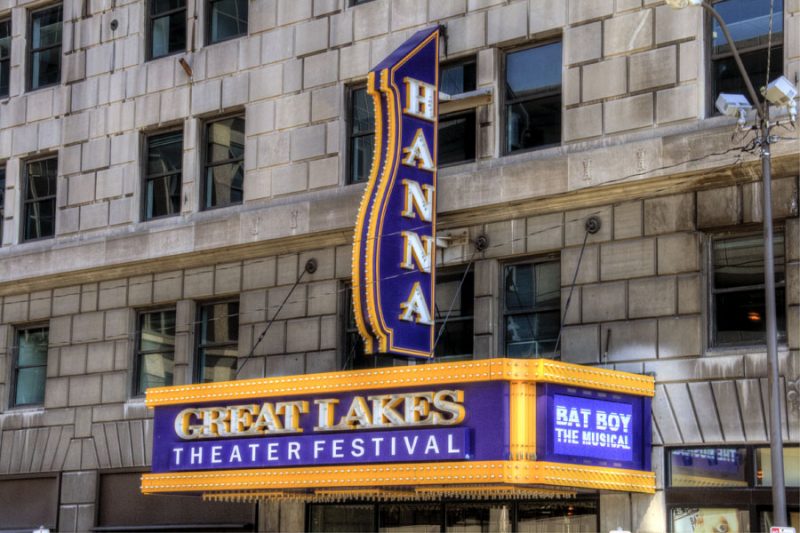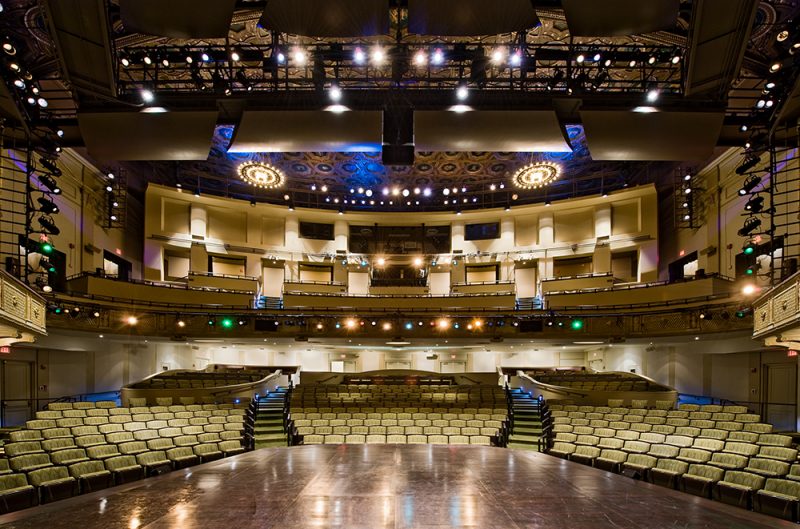Cleveland, Hanna Theatre


Current Name of Theater: The Hanna Theatre
Current Type: Performing arts center
Seats: 550
Website: http://www.playhousesquare.org
Historic Names of Theater: The Hanna Theatre
Address: 2067 E 14th St, Cleveland, OH 44115
Phone: (216) 241-6000
Year Built/Style: 1920
Original Architect: Charles A. Platt
Original Cost:
Listed on National Register: 78002041
History of Theater:
The Hanna Theatre is a theater at Playhouse Square in downtown Cleveland, Ohio, United States. It is one of the original five venues built in the district, opening on March 28, 1921.
The Hanna Theatre was envisioned by industrialist and publisher Daniel Rhodes Hanna as part of a larger complex in memorial to his father, late U.S. Senator Mark A. Hanna, and was designed by architect Charles A. Platt. Faustinno Sampietro was responsible for most of the interior decorations, which included green and gold carpets, dark green seats, frescoed walls, a fireplace, and Louis XVI gilt furniture; the ceiling was coffered and was made up of circular and octagonal medallions, each of which contained gilded classical figures (including Cupid, Psyche, and Pegasus). The orchestra level consisted of 827 seats arranged in 24 rows, and the upper deck held 570 seats. Four rows in the mezzanine, ten rows in the upper balcony, and the box seats brought the theatre’s full capacity to 1,421. The stage was forty feet in width and forty feet in depth, equipped with a thirty-six foot proscenium arch.
On March 28, 1921, 1,500 people ventured out into the freezing cold temperatures to witness the new theatre’s first production, William Faversham’s adaptation of The Prince and the Pauper by Mark Twain. The lobby measured a little over twenty feet in each direction and was nothing in the way of spectacle compared to the State and Ohio Theatres, both of which had opened the previous month. At exactly 8:15 Cleveland orchestra director Max Faetkenheuer opened the show with the “Star-Spangled Banner” and the play began. During intermission, playwright Faversham gave an impromptu speech at the request of the theatre patrons.
Cost of Rehabilitation: $14.7 million
Architect:
Contractors:
Source of Funds:
Renovation Story:
The Hanna Theatre reopened in 2008 as the new home of Great Lakes Theater Festival after a major renovation by the classic theater company.
The Hanna Theatre was fully restored and reopened in 2008 with the following changes:
1. Six styles of seating: regular house seating, private box, banquette, club, lounge, and bar; reduction to 550 person capacity
2. Multiple ticket-price points for each performance ($20 for lounge area and up to $60 for premium seats)
3. A three-part hydraulic thrust stage that can lower to create a traditional proscenium stage with a full orchestra pit
4. A computer controlled mechanical fly system structurally independent of the building to handle more weight, intended to raise and lower scenery
5. Renovated street-level entrance with a door from the balcony level to an elevator lobby in the Hanna Annex building to allow patrons covered access to a parking garage, and balcony access for disabled patrons
6. Registration with the U.S. Green Building Council’s Leadership in Energy and Environmental Design Green Building Rating System, in pursuit of a Silver rating, the third-highest rank
The 14.7 million dollar renovation was meant to rejuvenate the house space and create a comfortable atmosphere for theatre patrons. The Hanna Theatre was the last Playhouse Square theater to be renovated, a process that began in 1981. Great Lakes Theater producing artistic director Charles Fee and director Bob Taylor were behind the designs for the new theater. The renovated Hanna Theatre opened on September 20, 2008.
Interesting Facts
1. Dan Hanna insisted he wanted more room in between the fourth and fifth rows when he tested out a seat he meant to reserve for himself, and as a result there remained thirty-five inches in between these two rows instead of the standard thirty-one inches.
2. When the Hanna Theatre opened in 1921, the most expensive seats cost three dollars.
![]()

